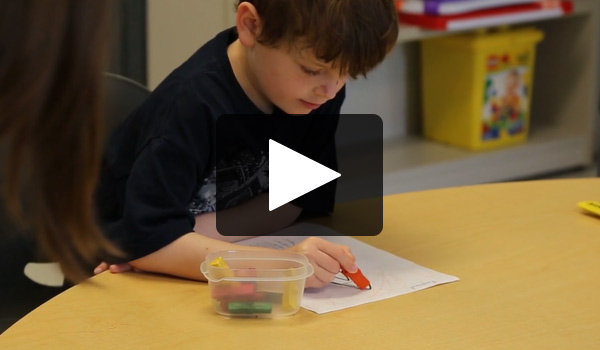Gannon University’s School of Education and biomedical engineering program worked together to bring a new classroom resource to students at Erie’s Barber National Institute (BNI) through its Integrated Crayons for Adaptive Needs (ICAN) project.
The ICAN project was a cross-disciplinary, community project funded by an Erie-Gannon Alliances to Improve Neighborhood Sustainability (Erie-GAINS) mini-grant. Nancy (Heiss) Morris ‘03, an instructor in Gannon’s education program, and her students coordinated donation sites at fifteen local elementary schools to collect recycled crayons for the project. Morris then brought in the biomedical engineering program, and worked alongside its faculty and students who assisted with repurposing the crayons to be adaptable for children with fine-motor skill impediments.
“I wanted to do this project because it involves so many disciplines: It is active service and project-based learning, students experience community engagement, creation of a product from inception to production, and we engaged students and schools from across the county to take part in service to the BNI students,” said Morris.
“Crayons were collected, sorted, cleaned and delivered to students enrolled in the engineering program to be melted and molded into useable crayons for preschool students,” she said.
Students in the biomedical engineering program received guidance and insight from occupational therapists at BNI as well as Morris and the education students to develop the original mold design of the re-engineered crayons.
Davide Piovesan, Ph.D. assistant professor of biomedical engineering, and students in his Tribology class worked to develop a mold that would be easy for the kids and their families to use at home too.
The Gannon engineering students are learning, however, that just like in the future careers they’ll soon encounter, they may not always find the best solution on the first try. In March, Michael Benesh ‘16, senior mechanical engineering major and Gannon’s 2015-16 American Society of Mechanical Engineers chapter president, shared his experience working on the project thus far.
“The problem we’re having with this particular mold and design is trouble extracting the crayons,” he said. “Were in an intermediary stage of coming up with the final design. We’re not there yet; but, we have a 3D-printed model of a 14-cavity mold and the same mold made of wood, which was produced on the CNC mill at Gannon,” he said. “The next step is to have a fit pattern that’s the same as what we have, except turned inside out, and we’re also going to try to make it out of silicone.”

Learn more about the Integrated Crayons for Adaptive Needs project.
Piovesan and the engineering students continued to develop variations to find a best-practice solution. “The students designed the crayons on a computer program and transferred it to a machine to make the form necessary to produce the mold.”
“Having created a set of molds, Gannon students researched the specific process to reduce the curing time of silicone resin from seven days to only 20 minutes. A silicone mold allows for both large and small production where the wax is either melted separately and poured into the mold, or crayons are melted directly into the mold using a microwave oven.”
Graduate mechanical engineering student Ajay Kumar said, “This process can be done whenever, wherever and by whomever.”
The final crayons were created to be large and triangular in shape, and had a different texture and scent than a typical crayon. Because students with fine-motor skill impediments have difficulty grasping small objects, the students also equipped the crayon with a guard to help the preschoolers’ fingers from sliding down the crayon.
The crayons were demonstrated in May to BNI, where the preschool students tested them, coloring pictures for the students and professors at Gannon. The full donation is scheduled to be delivered in Fall 2016.